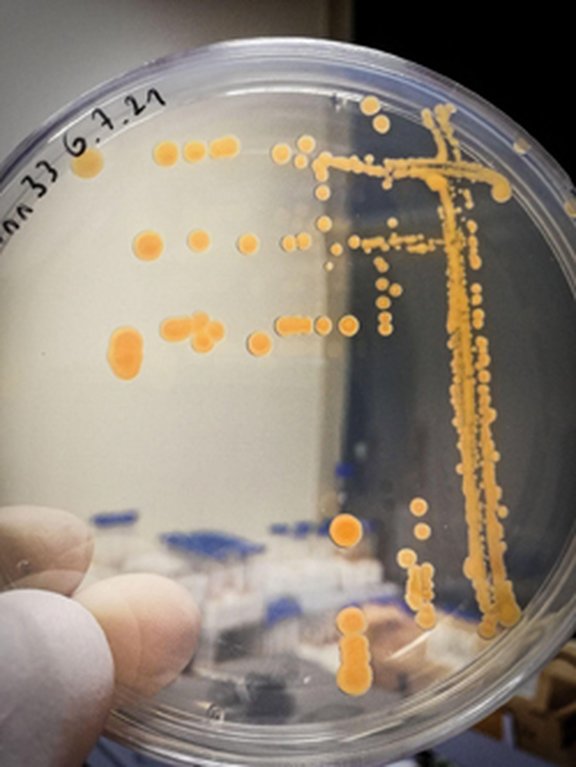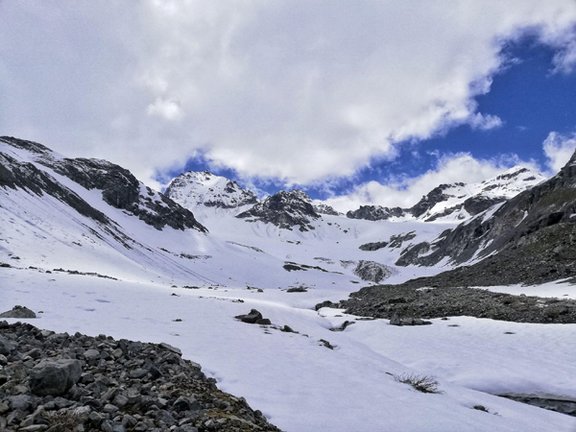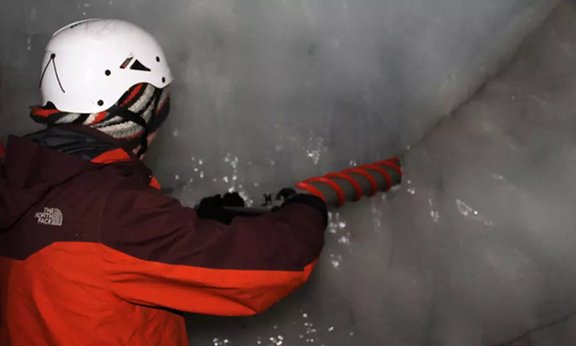My name is Daniel, and I joined the "Cryos" (working group of Birgit Sattler) during my master's thesis in 2018. But long before that, I enjoyed discovering the secrets of our nature and soon became spellbound by the fascinating life of extremophile microorganisms. To follow this passion, I decided to study biology at the University of Innsbruck, where I got to know Birgit and her work on microbial life in the cryosphere, which turned out to be a perfect combination of my interests.
During my master's thesis, where I planned to investigate the microbial community of a touristic ice cave below the skiing area at Hintertux, we found an unexpectedly high number of antibiotic-resistant bacteria. These surprising findings then started a follow-up project leading to my Ph.D. at the Institute of Ecology.
As already implied, I am currently working on detecting antibiotic resistance in cryospheric habitats.

(Credit: D. Gattinger)
While the occurrence of antibiotic-resistant bacteria was always thought to be an urban phenomenon, this perception is slowly but steadily changing. Several studies worldwide have already shown that antibiotic resistance is in fact a worldwide problem, affecting even the world’s most remote habitats like the arctic.
For my research, we want to assess the spread of antibiotic-resistant microbes in the Tyrolean alpine space, as detecting antimicrobial resistance in the cryosphere could be pivotal to better estimate and understand its global distribution. Furthermore, liquid water availability is enhanced due to climate change – an effect also known for its ability to revitalize otherwise dormant cells – and needs to be considered when talking about resistance mechanisms in glacial microbial communities. Melt processes ultimately lead to relatively large abundances of microbes that start to integrate into melting waters. It is one of our goals to assess the abundance and potential of these microbial communities in alpine areas. To do this, we are using a combination of cultivation-based methods such as the agar-disk-diffusion test and molecular biological approaches (e.g. screening for antibiotic resistance genes) together with our research partner at the Fondazione Edmund Mach.

In addition, a major goal and challenge of my Ph.D. project is the evaluation of the impact of human activity on the presence of antibiotic resistance in cold environments. To address this research question, we are sampling and comparing data from developed glacier areas (e.g., Stubai Glacier) to relatively remote glacial sampling sites like the Jamtalferner.
Tracking of anthropogenic influence with a new approach using tracking data from famous sportwatch manufacturers gives us the ability to estimate and compare human activities at different sampling sites.
Last but not least, a goal of this project, but also my personal objective, is to raise awareness about the topic of antibiotic resistance. To achieve that, we have set up a website and a blog that is addressed to the non-scientific community and updated on a regular basis. By the end of my Ph.D., the website should also include an interactive map of antibiotic resistance in the Tyrolean alpine space. You can check it out here: https://alpineresistancemap.com & https://blog.alpineresistancemap.com
Daniel Gattinger
Research Group: Lake and Glacier Research
daniel.gattinger@student.uibk.ac.at

